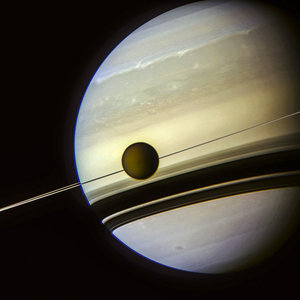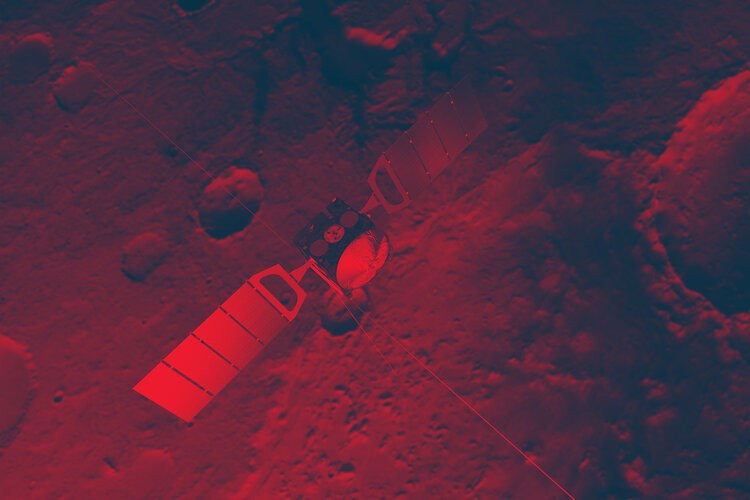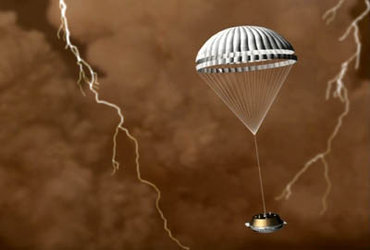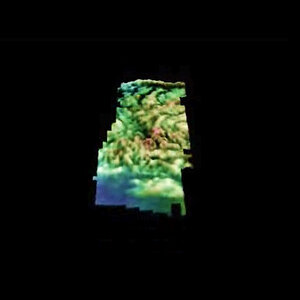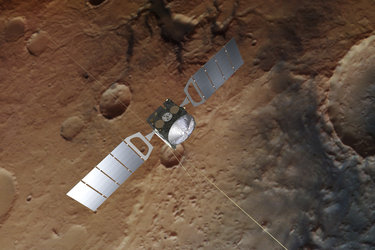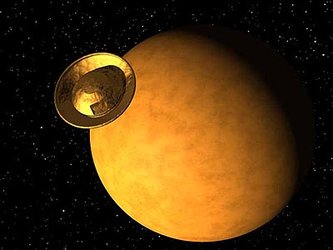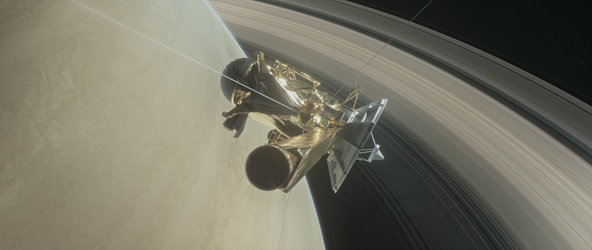First 'in situ' composition measurements made in Titan's atmosphere
Unique results from the Aerosol Collector and Pyrolyser (ACP) and the Gas Chromatograph Mass Spectrometer (GCMS) have given scientists their first in situ chemical data on Titan's atmosphere, including aerosols, chemical composition and isotopes.
Two of Titan's key unknowns are the origin of the molecular nitrogen and methane in the atmosphere, and the mechanisms by which methane is maintained in the face of rapid destruction by photochemistry (chemical processes that are accompanied by or catalysed by the emission or absorption of visible or ultraviolet light).
The GCMS measured chemical composition and isotope abundances from 140 km altitude to the surface and confirmed the primary constituents were nitrogen and methane, and that the haze in the atmosphere is primarily methane.
From isotopic ratio measurements, the Huygens scientists obtained two key findings. The carbon isotope ratio (12C/13C) measured in methane suggests a continuous or periodic replenishment of methane in the atmosphere, but no evidence was found of active biological systems.
The nitrogen isotope ratio (14N/15N) suggests to the scientists that the early atmosphere of Titan was five times denser than it is now, and hence lost nitrogen to space.

Argon 36 was detected for the first time, but not xenon or krypton. However, the argon was found in low abundance, which is especially interesting because of the huge, nitrogen-dominated atmosphere and because about 50% of the mass of Titan is water ice, known to be a potentially efficient carrier of noble gases.
This low abundance implies the atmosphere was condensed or captured as ammonia, instead of nitrogen. The non-detection of the other noble gases, a surprising finding, will also fuel theories of the origin and evolution of Titan's atmosphere.

The composition of surface vapours obtained by GCMS after landing shows that Huygens landed on a surface wet with methane, which evaporated as the cold soil was heated by the warmer probe. The surface was also rich in organic compounds not seen in the atmosphere, for example cyanogen and ethane, indicating a complex chemistry on Titan's surface as well as in the atmosphere.
Argon 40 was also detected at the surface and its presence indicates that Titan has experienced in the past, and is most likely still experiencing today, internal geological activity.

Titan's aerosols play an important role in determining atmospheric thermal structure, affecting the processes of radiative heating and cooling. They can help to create warm and cold layers that in turn contribute to circulation patterns and determine the strengths of winds.
The ACP obtained direct measurements of the chemical make-up of these aerosol particles. From an analysis of the products obtained by pyrolysis (chemical decomposition of organic materials by heating) of aerosols at 600°C, ammonia and hydrogen cyanide were the first molecules identified.
This is of prime importance because ammonia is not present as a gas in the atmosphere, hence the aerosols must include the results of chemical reactions that may have produced complex organic molecules. They are not simply condensates.
Aerosol particles may also act as condensation nuclei for cloud formation, and are the end-products of a complex organic chemistry which is important in astrobiology. Indeed, Titan offers the possibility to observe chemical pathways involving molecules that may have been the building blocks of life on Earth.
Notes to editors:
This summary is based on papers which appear on line in Nature, on 30 November 2005.
For more information:
Hasso Niemann, PI Gas Chromatograph Mass Spectrometer
NASA GSFC, Greenbelt, USA
E-mail: Hasso.Niemann @ gsfc.nasa.gov
Guy Israel, PI Aerosol Collector and Pyrolyser
Service d'Aeronomie, Univ. de Paris and Versaillles-Saint Quentin, France
E-mail: guy.Israel @ aerov.jussieu.fr,
Jean-Pierre Lebreton, ESA Huygens Mission Manager
E-mail: jplebret @ rssd.esa.int















 Germany
Germany
 Austria
Austria
 Belgium
Belgium
 Denmark
Denmark
 Spain
Spain
 Estonia
Estonia
 Finland
Finland
 France
France
 Greece
Greece
 Hungary
Hungary
 Ireland
Ireland
 Italy
Italy
 Luxembourg
Luxembourg
 Norway
Norway
 The Netherlands
The Netherlands
 Poland
Poland
 Portugal
Portugal
 Czechia
Czechia
 Romania
Romania
 United Kingdom
United Kingdom
 Slovenia
Slovenia
 Sweden
Sweden
 Switzerland
Switzerland
























